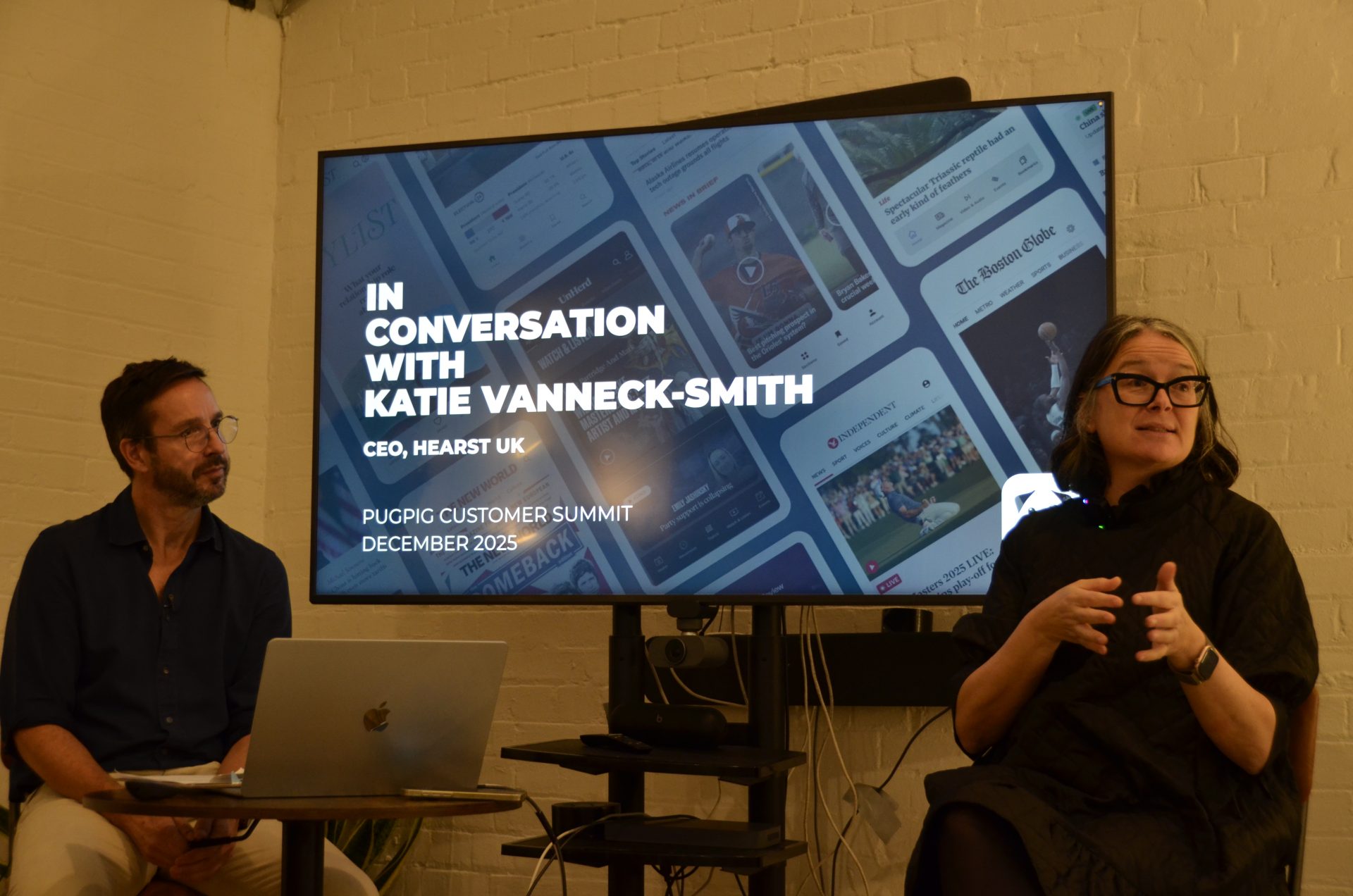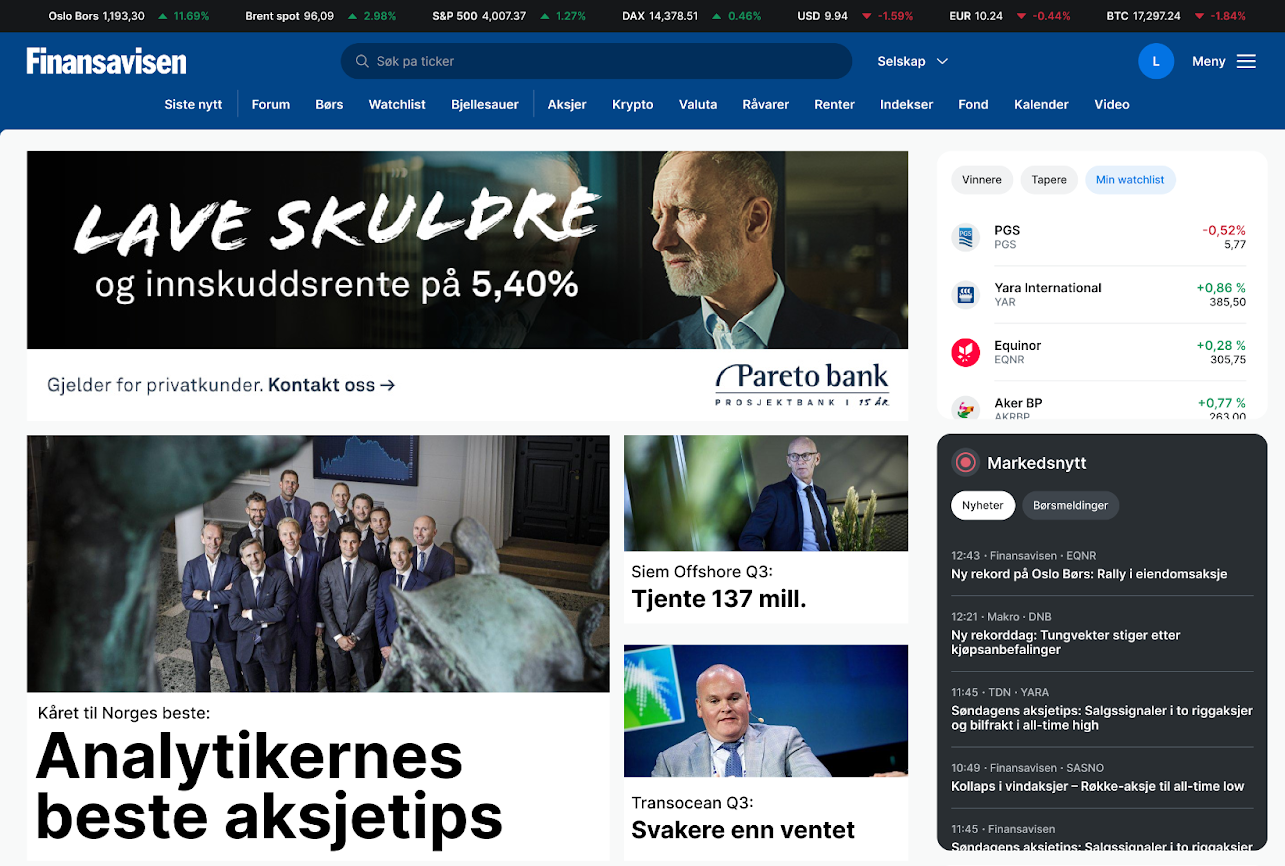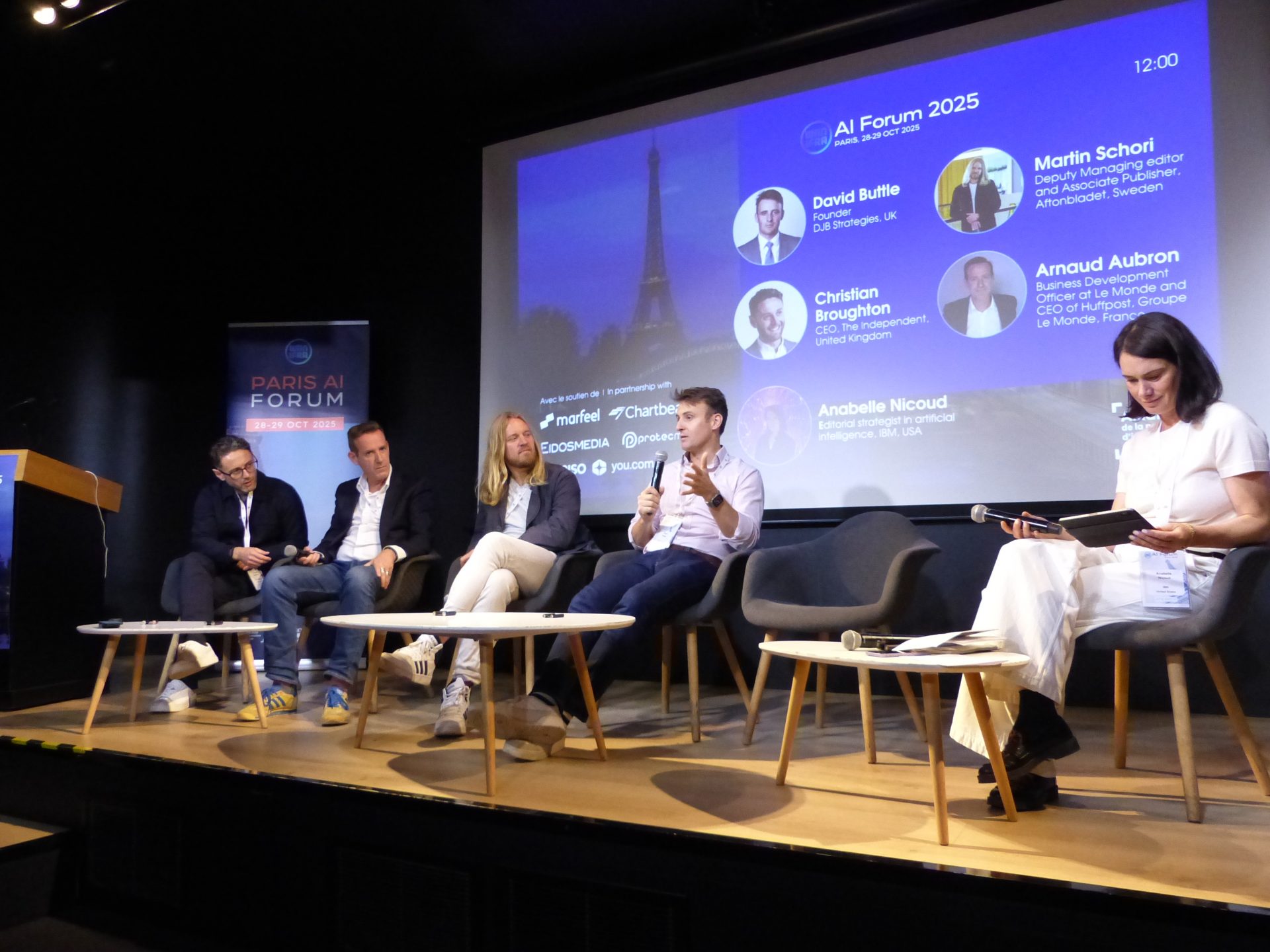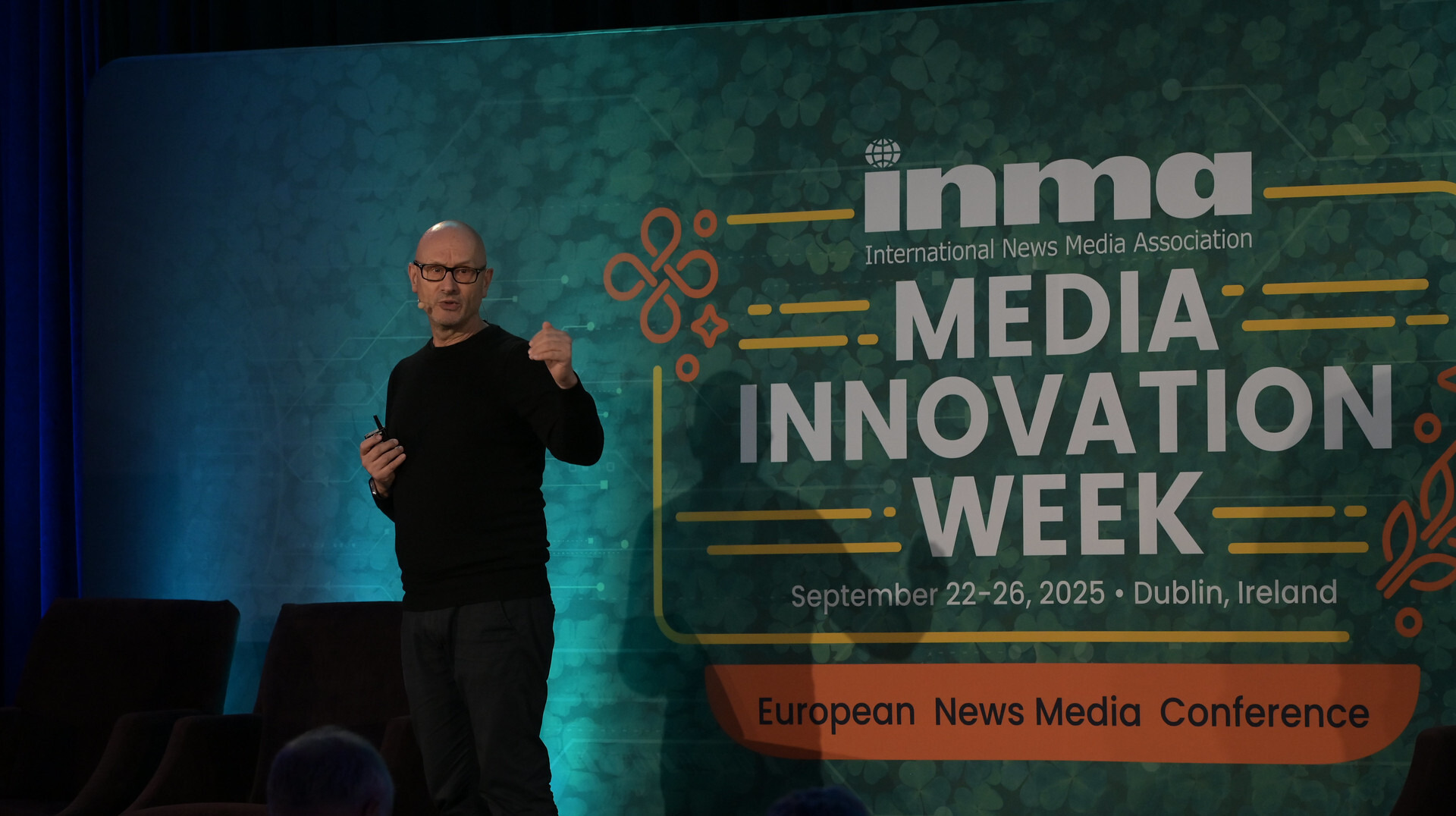
Newsletter
Newsletter
Research from the US has found that a focus on pageviews may actually hurt your subscription strategy.
11th May 2023

In the Pugpig weekly media bulletin, Pugpig’s consulting services director Kevin Anderson and digital growth consultant James Kember distill some of the best strategies and tactics that are driving growth in audiences, revenue and innovation at media businesses around the world.
What are the audience metrics that you track on a daily basis? You know, the ones that you talk about in your editorial and business meetings. Pageviews? Session duration? Pages per session? New research from the Medill Spiegel Research Center at Northwestern University in the United States has found that if your goal is subscriber acquisition and retention that some of the most widely used metrics including pageviews and time spent might actually have a negative impact on your subscription efforts. Instead, they suggest that reader habit, regularity, is most highly correlated with whether a reader is likely to subscribe and keep buying that subscription.
The Center first identified regularity as important to subscription acquisition in 2019 in a study involving 13TB of data from three local news publications, and that research started to question the importance of pageviews and time spent. But they cautioned about drawing overly broad conclusions due to the small sample size.
They also found that differentiated content was key to reader loyalty, and in the case of local news outlets, this meant local stories. “The exact meaning of local can vary between the markets, but what’s important is, you own that and others don’t. You do it better than anyone else,” said Ed Malthouse, Spiegel’s Research Director, of the research.
Based on that early research, the Center developed a subscriber engagement index to track propensity to subscribe and to help publishers identify at-risk subscribers that they will need to engage or lose. They developed this index after another study found that almost half of digital subscribers were ‘zombies’, not visiting the websites that they had paid to access even once a month.
Since that initial research, the Center carried out similar studies of business magazines and expanded the sample. The most recent survey reviewed data from 106 newspapers of all sizes and reinforced the findings of the initial small-scale study: Regularity is a better indicator of engagement and propensity to subscribe than pageviews or time spent. “(I)t’s preferable for subscribers to be in the habit of visiting your news source regularly as opposed to reading long articles occasionally and staying away for significant periods in between,” the research found. Importantly, as they have gathered more data, their position towards focusing on page views and time views has become firmer, and this year, they said that those metrics might actually have a negative impact on subscriber retention.
Key to building regularity is finding ways to develop digital habits in your audience, and publishers have become much more adept at that through connecting with readers regularly using newsletters, text messages and push notifications from apps.
Another point they stressed was the importance of excellent user experience in subscriber retention, particularly for mobile readers. “We found that people who were using the mobile browser were more likely to churn,” Malthouse said, adding, “If you’re using the mobile app, you were much less likely to churn, or if you were using another device like a tablet or a PC.”
The research cautioned against a one-size-fits all content strategies because audience needs in large markets and small markets are different. Local and state news drives regularity regardless of market size. But in large markets, food and dining was important in building reader habits, but it wasn’t in medium and small markets. Obituaries engaged regular readers in small and medium markets, but had a negative impact on regularity in large markets. The content needs to be distinctive and valued by the audience. To deliver valuable content, publishers need to focus. Malthouse said, “(A publication) needs not to try to do everything.”
While the research focused on news outlets, we believe that the core messages hold up regardless of whether you’re a newspaper or a consumer or business magazine. Those lessons are:
On 25 April the annual PPA Festival took place in London and, as we’ve heard at lots of events recently, the key theme was retention. After the boom of subscriber acquisition that occurred during the pandemic, many of the publishers we’re speaking with have pivoted their focus away from growing their subscriber base to ensuring that they retain the ones they’ve already got. We’ve previously discussed how retention is now the top priority for over two thirds of publishers and in their round up of the PPA event, Charlotte Tobitt of Press Gazette discussed four approaches that publishers at the event were taking reduce churn.
Engaging print subscribers through a digital product
Gardeners’ World had a problem with retention: They had no idea if a print subscriber was going to renew and no way to encourage them to stay until the date their subscription expired. At the PPA Festival, Ed Garcia, Head of Retention at Immediate Media talked through how they had launched a digital product, Gardeners’ World Premium, to change this. The product can be subscribed to independently for £4.99 a month but comes free with a print subscription. It offers digital content such as expert advice, a regular Q&A, podcasts, videos, newsletters, discounts and competitions.
The aim of the premium digital content is twofold. It adds additional value to the subscription, offering another reason for the subscriber to renew whilst allowing for Immediate to gather data on the interests of their audience, which they can leverage in personalised renewal efforts. To date it’s been very successful. For print subscribers who have ‘unlocked’ their online access their renewal rate was 74% – 9 percentage points higher than those that haven’t. Moreover, there is a clear correlation between usage of the Premium product and renewal, with a 92% renewal rate for those that have logged in within the last month and 96% for those that have logged in 15 or more times in the last three months. This echoes the importance of regularity and the broader role that building audience habits has on retention that Medill’s research found.
For Immediate, the more users that engage with their digital product, the higher their retention rate. At Pugpig we see similar results from the publishers we work with who leverage their app as a premium product.
Positive reinforcement to drive appreciation of the product
Seem Kumari, Senior Director of Consulting Marketing and CRM at Hearst also had a tip for publishers who are able to leverage audience engagement data. Kumari suggested telling a story about the subscriber’s use of a product to positively reinforce the value of their subscription. Drawing on the example of Spotify’s Wrapped feature where the digital music service unveils an annual personalised review of each users music consumption over the prior 12 months, Kumari proposed informing the user how many newsletters they have opened and stories they have read.
This is an intriguing suggestion and is something to consider for publishers who have high digital engagement but an audience that doesn’t see the value in their subscription. However, it is potentially counterproductive for publishers that struggle with engagement and could inadvertently present inaccurate data or highlight the lack of usage to a subscriber. Therefore, the best approach is to focus initially on increasing engagement with digital products, as Gardeners’ World is doing, and then combining that experience with product usage review messaging and features.
‘Friendly friction’ within the renewal funnel
The third tip also came from Hearst, with a suggestion aimed at helping to save users who are looking to cancel online. Kumari recommended the use of very simple messaging to introduce ‘friendly friction’ into the cancellation journey. Stating that the aim is not to disrupt the user journey and advocating against practices such as hiding buttons, Hearst has seen success with introducing pop-ups into the cancellation screen that deliver messaging aimed at ensuring that the user has fully considered their decision.
However, the practice of making it harder to unsubscribe is under increasing scrutiny, for example, the Federal Trade Commission in the US is proposing a “click to cancel’ provision. Kumari accepts that making a cancellation too difficult can leave the user with a negative impression of the brand and less likely to re-subscribe in the future. Therefore, it should be considered if the “save” messaging can include positive reinforcement to remind the user of the value they’ve achieved from their subscription to date, rather than attempting to disrupt or frustrate the cancellation process.
Farmers Weekly talk to their subscribers
The final talking point came from Tony Hill, Marketing and Events Director at Mark Allen Group who advocates having direct conversations with individual subscribers as they approach their renewal. Farmers Weekly’s renewal team regularly picks up the phone and calls their subscribers, engaging in conversations not directly related to the subscription but ultimately encouraging a renewal.
The benefits of this approach are clear for primarily print-based publishers aimed at professional organisations, but it’s not going to be scalable for most media groups. That being said, the overall point is valid. Publishers that build deeper relationships with their subscribers will be more likely to be able to reduce churn. Moreover, the ability that digital publishers now have to understand the type of content their audiences are engaging with offers opportunities to build personalised renewal experiences and to use channels like email, social and push notifications to reach users at the best time, even if picking up the phone for a chat isn’t practical.
Pugpig’s Consulting Services team is helping our publishing partners to build personalised renewal experiences aimed at reducing churn. If you would like to discuss how we can help you, contact us at info@pugpig.com.
Here are some of the most important headlines about the business of news and publishing as well as strategies and tactics in product management, analytics and audience engagement.

Newsletter

Newsletter

Newsletter

Newsletter

Newsletter